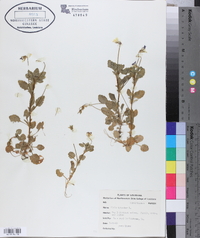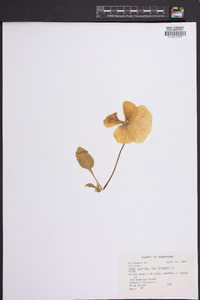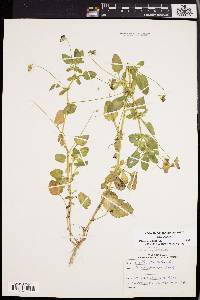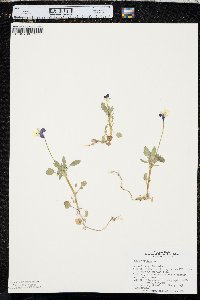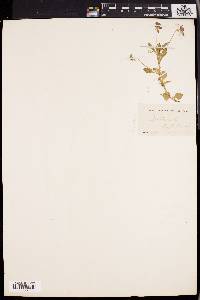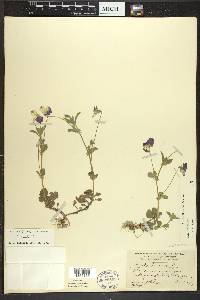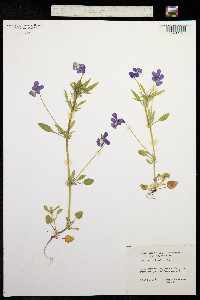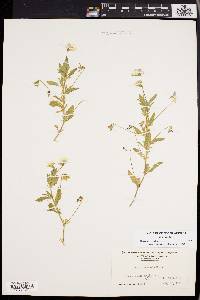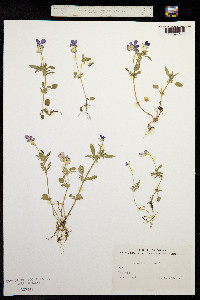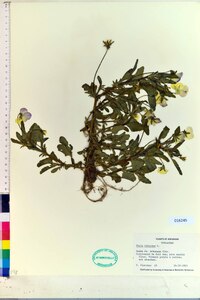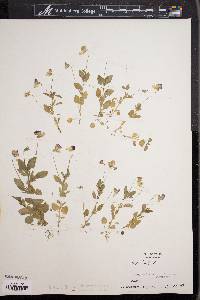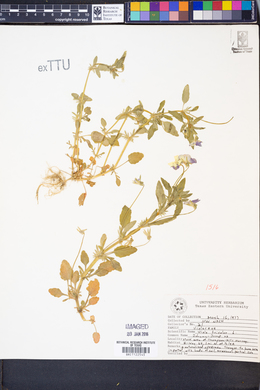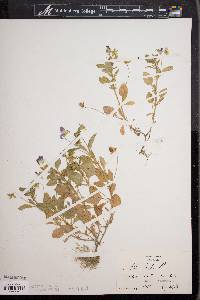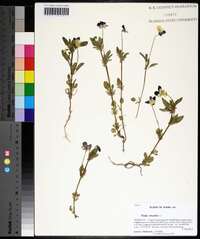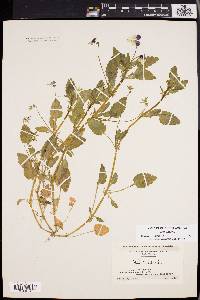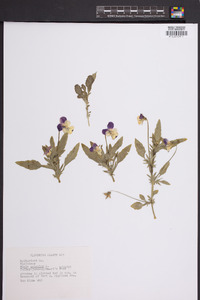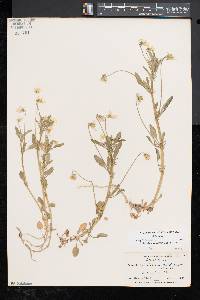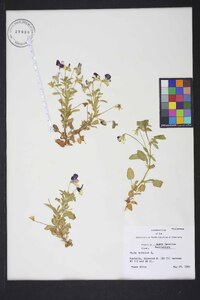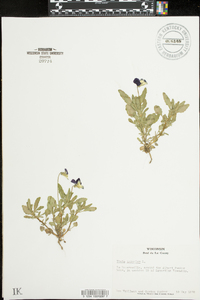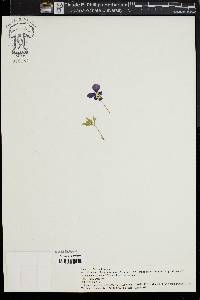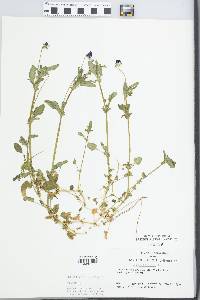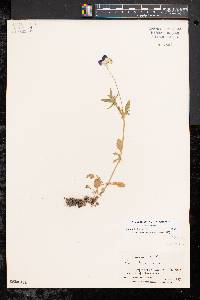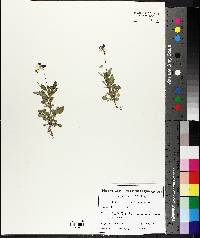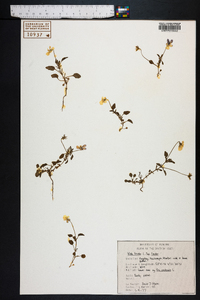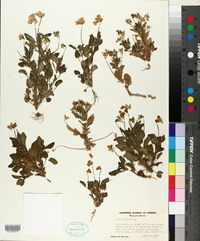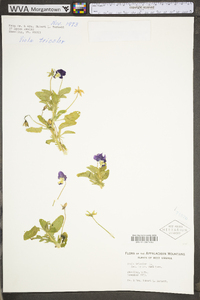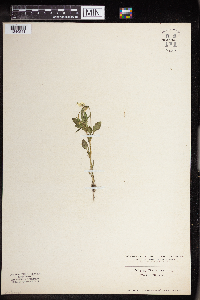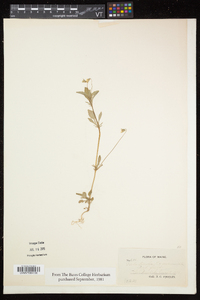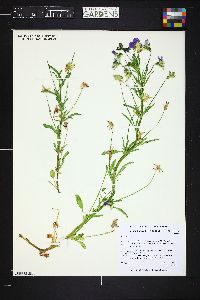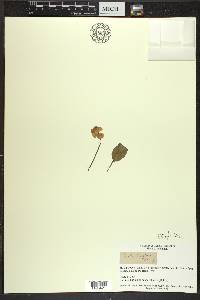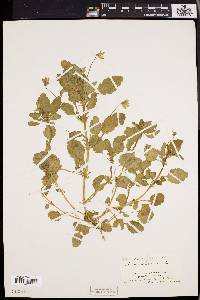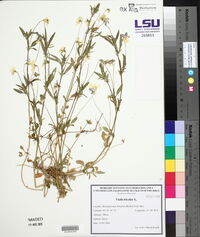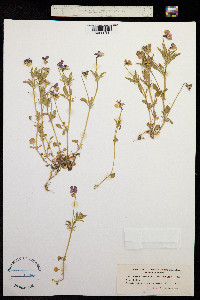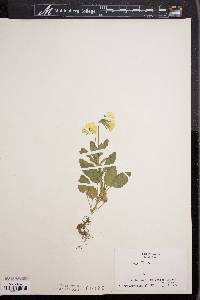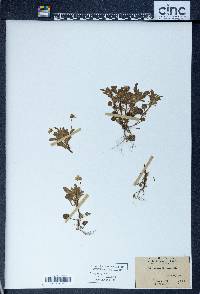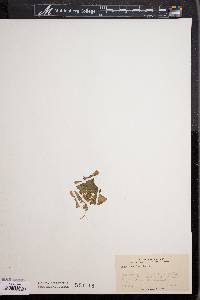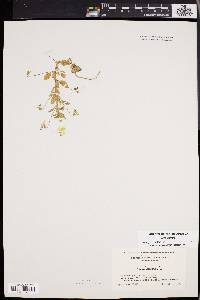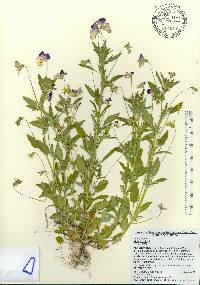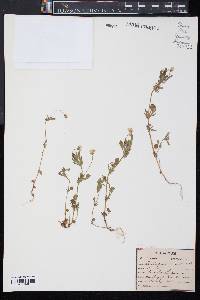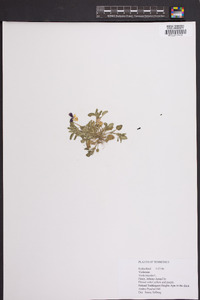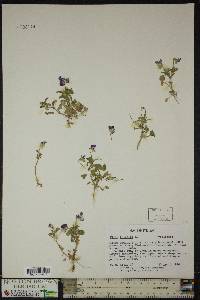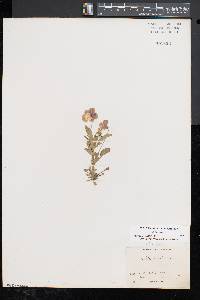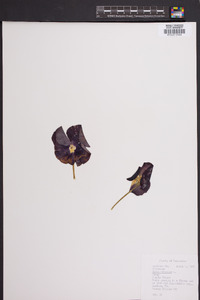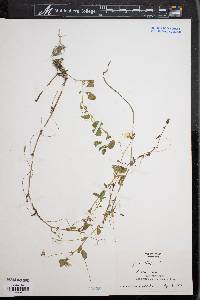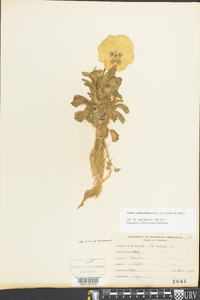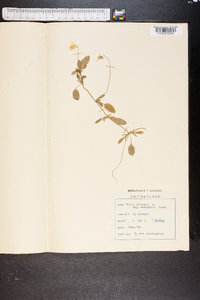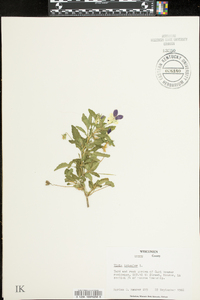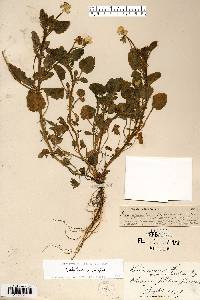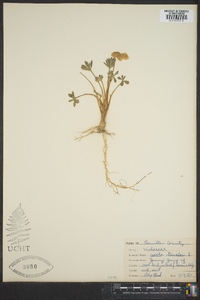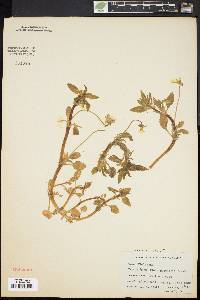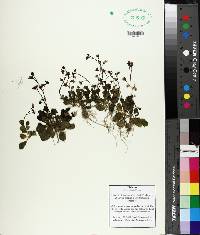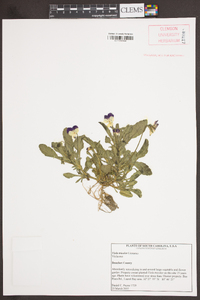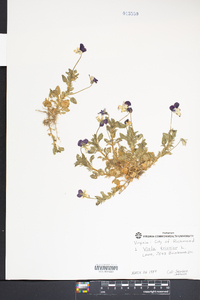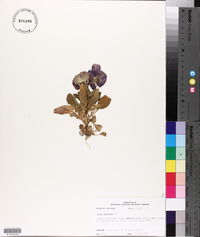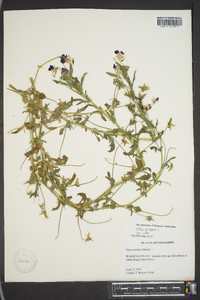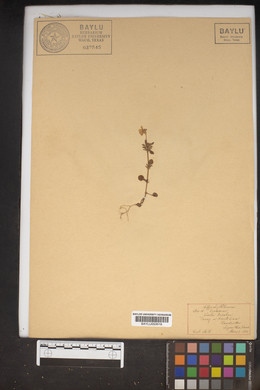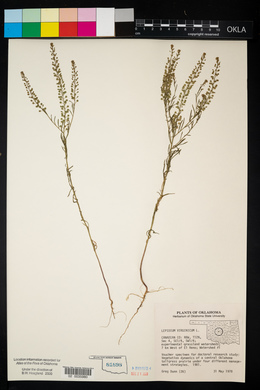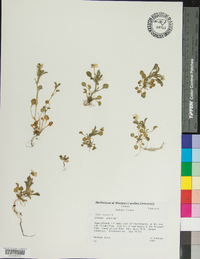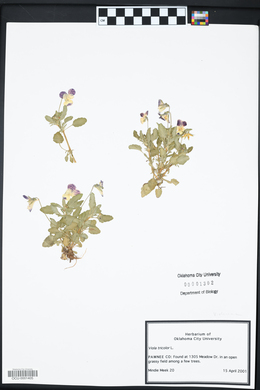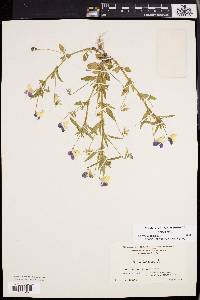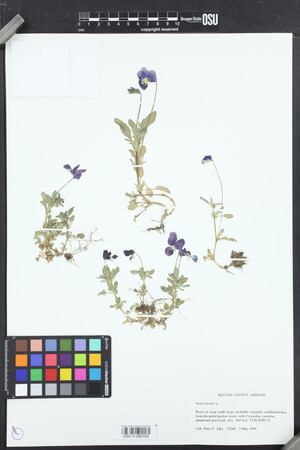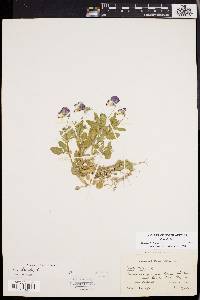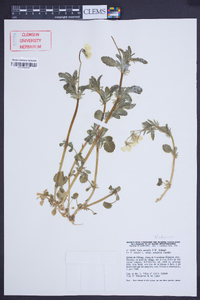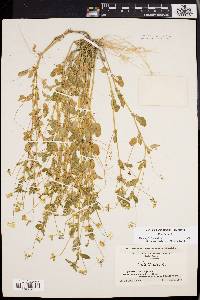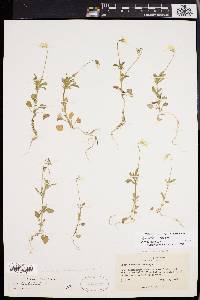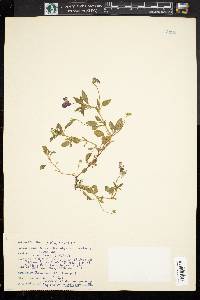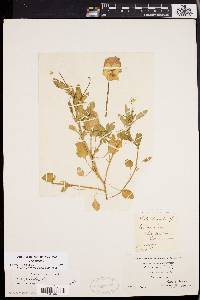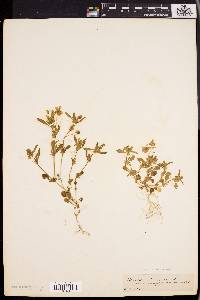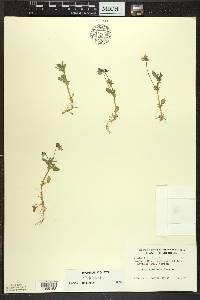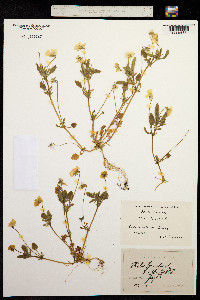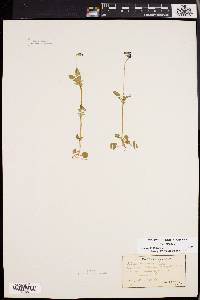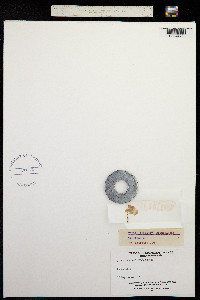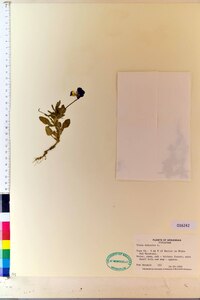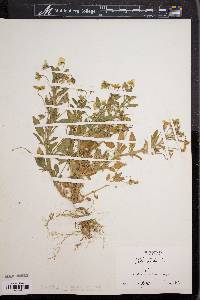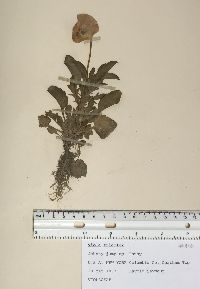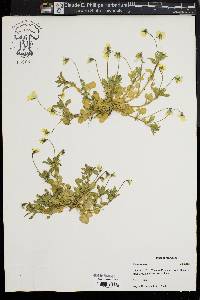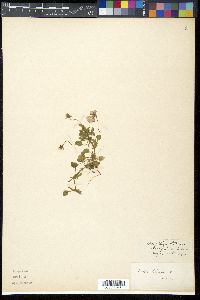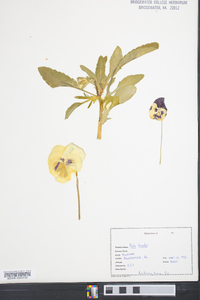
|
|
|
|
Family: Violaceae
Johnny-Jump-Up, more...heart's pansy, johnny jumpup, ladies delight, wild pansy
[Viola tricolor var. hortensis] |
Annual or short-lived perennial herb 10 - 30 cm tall Stem: erect, often branched from the base, soft, somewhat brittle, sometimes minutely hairy on stem angles, and producing both leaves and flowers. Leaves: alternate, closely spaced, stalked (sometimes shortly so), hairless or sometimes minutely hairy, round-toothed, and 1 - 5 cm long. The lower leaves are rounded (often with a heart-shaped base), but the upper leaves are oblong to elliptic with a tapered base. Stipules large, almost leafy, 1 - 3 cm long, deeply lobed near base into many slender segments and one large terminal segment. Flowers: in upper leaf axils, long-stalked, blue-violet with yellow markings (especially at center), 1.5 - 3 cm long, 1.5 - 2.5 cm wide, bilaterally symmetric with two upper petals, two lateral petals, and lower petal with base modified into a rounded nectar spur. Sepals: five, green, about two-thirds the length of petals, lance-shaped with ear-like appendages (auricles) at the base. Petals: five, separate, all differently shaped, much longer than sepals, yellow or creamy at base, but upper two petals with upper half dark blue or purple. The lowest petal is prolonged at its base into a short (3 - 5 mm), rounded spur or sac. Stamens: five, separate, but very tightly arranged so anthers touch as they surround ovary. The filaments are very short, and the lower two stamens have spur-like nectaries on their backs that extend into the spur or sac of the lower petal. Pistil: with a single-chambered, superior ovary; a single style that greatly enlarges near the tip; and a globose, hollow stigma with a wide opening on the lower side. Fruit: a many-seeded, 0.6 - 1 cm long, egg-shaped capsule that opens lengthwise from top. The seeds are dark brown and have a large amount of oily endosperm, and often an appendage (aril). Similar species: Viola tricolor is probably most similar to V. arvensis, but that species has smaller creamy yellow flowers with the petals normally only as long as the sepals. The garden pansy, V. x wittrockiana, is somewhat similar, but differs by having much larger, more brightly and variably colored flowers with the upper petals noticeably larger than the lateral ones. Also somewhat similar is V. rafinesquii (also known as V. bicolor), but that species differs by having less than 1.5 cm long flowers that are pale blue with yellow centers, and some of the upper leaves may be non-toothed. Flowering: May to September Habitat and ecology: Introduced from Europe, an occasional weed in gardens and nursery plots. Occurence in the Chicago region: non-native Notes: This species is believed to be a parent of the common garden pansy, Viola x wittrockiana, though that hybrid has a very complex heritage. Etymology: Viola is the classical name for the genus. Tricolor means "three color", referring to the three colors often displayed in the flowers. Author: The Field Museum Glabrous or hairy annual or short-lived perennial to 3 dm, often branched from the base; lvs all crenate, the lowest ones orbicular or cordate, the upper oblong to elliptic and basally cuneate; stipules foliaceous, laciniate to lyrate-pinnatifid, the middle lobe oblanceolate, distinctly toothed; internodes usually shorter than the lvs; fls 1.5-2.5 cm wide, the sep two-thirds as long as the pet; pet variously colored, the upper usually darker than the lower; style as in no. 27 [Viola rafinesquii Greene]; cleistogamous fls wanting; frs ellipsoid or oblong-ellipsoid, 6-10 mm; seeds dark brown; 2n=26. Native of Europe, extensively cult. and casually escaped in our range. Gleason, Henry A. & Cronquist, Arthur J. 1991. Manual of vascular plants of northeastern United States and adjacent Canada. lxxv + 910 pp. ©The New York Botanical Garden. All rights reserved. Used by permission. From Flora of Indiana (1940) by Charles C. Deam This species has been reported from the following counties: Clark (Baird & Taylor); Jefferson (Barnes, Coulter); Knox (Spillman); Shelby (Ballard); St. Joseph (Nieuwland); and for the Lower Wabash Valley (Schneck). Nieuwland says it maintains itself in St. Joseph County. …… Indiana Coefficient of Conservatism: C = null, non-native Wetland Indicator Status: N/A |

